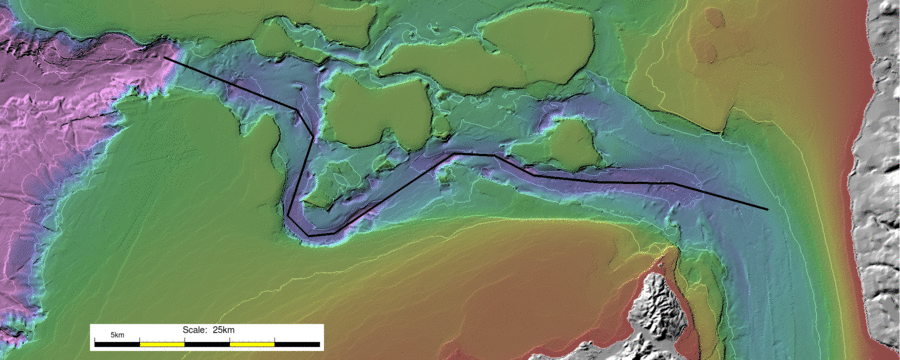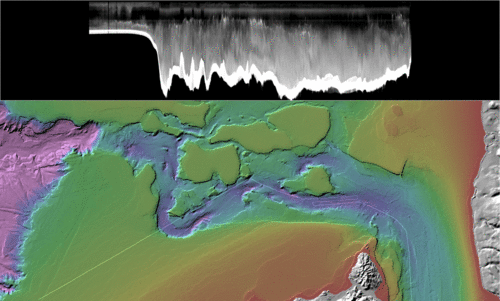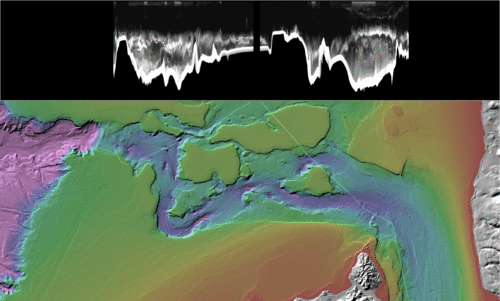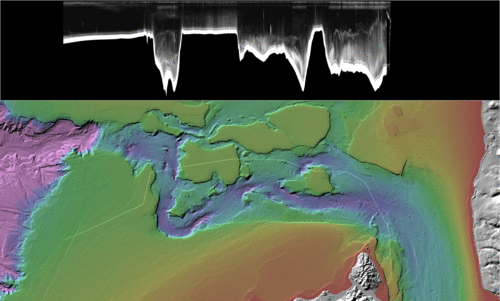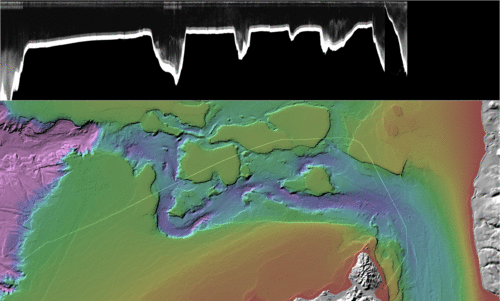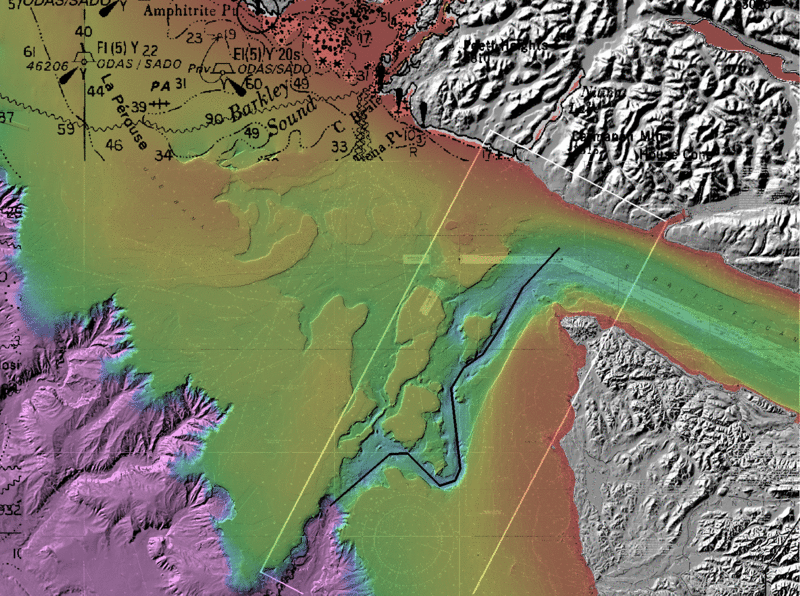
showing the mouth of the Strait of Juan de Fuca and the link between it and the shelf break, formed by the Juan de Fuca "canyon".
The black line indicates the proposed transect. The white box shows the bounds of the more detailed figure below.
Superimposed is the NOAA chart showing the shipping lanes
